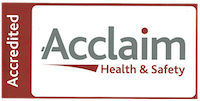What is the best material for your roof?
- Tiles: Commonly made from clay, tiles are durable, aesthetically pleasing, and resistant to fire, rot, and insects. However, they are heavy, requiring potential roof reinforcement, and fragile, making professional repairs necessary.
- Metal Roofing: Known for durability and energy efficiency, metal roofs are lightweight, low-maintenance, and fire-resistant. Despite high initial costs, they are long-lasting, making them a solid investment.
- Lead: Often used for roof flashings, lead is strong, affordable, and long-lasting. However, its toxicity, environmental concerns, and limited global supply are significant downsides.
- Torch-on Felt: Popular for flat roofs, torch-on felt is durable, waterproof, and versatile, but requires regular maintenance, skilled installation, and can degrade under UV light or high heat.
- Rubber (EPDM): An eco-friendly alternative to felt, rubber roofing is affordable, durable, and provides insulation. However, it may require resealing and can be prone to damage from foot traffic or improper installation.
When it comes to roofing, most homeowners usually prefer using a material that is cost-effective, easy to maintain and durable.
That said, the following infographic outlines the various types available on the market today, and their pros and cons:

Roof-tiling materials and slates
Tiles are usually made from materials such as ceramic materials, clay, and sometimes even glass.
However, those made from clay are usually the most common, and are ideally glazed with a weather resistant coating to make them more durable.
One of the main pros of tiling aside from its longevity, is that it offers great aesthetics.
Moreover, tiles are resistant to fire, rotting, and insects.
A major con is that they are usually heavy, so installation may sometimes require reinforcement to support the weight, consequently increasing the overall expenses. Another disadvantage is that they are fragile and can be easily damaged when walked on. As such, tiled-roof repairs are best left to professionals who know how to manoeuvre when undertaking installation and maintenance.
Metal Roofing
Metal roofing is slowly coming back into vogue, with the standing seam (with upturned edge) steel roofing being one of the most popular. Some of the main advantages of metal roofs include:
- they can be made to look like tiles or shingles
- durability
- fire resistant
- have minimal maintenance costs
- more energy efficient as they retain less heat when compared to other types of roofing
Because they are light, reinforcing the roof structure is not necessary. However, one of the main disadvantages of this type of roofing is that the initial installation costs can be quite high, so it is advised that you do the necessary research and calculations to decide whether it is good investment for the long-term.
Lead Roofing
Although not as commonly used as tiles or sheet metal, lead is still a hugely beneficial material used in the roofing industry.
Lead is often used alongside roofs of all materials to protect vulnerable components such as roof flashings, thanks to its strength and malleability.
Other benefits of lead roofing is that it has a long lifespan, and is also one of the more affordable roofing materials around, so protecting your roof doesn’t have to come with a huge price tag. However, some of the cons to bear in mind when using lead are as follows:
- Lead is a toxic material which over time will break down and pollute any water it comes into contact with.
- There is only a finite amount of lead left for use, with some estimates putting current levels at less than a 50 year supply.
- Although more lightweight than other roofing materials, the weight of lead can still put extra stress on the gutters and roof line of a property.
Torch on Felt Flat roofing
Felt is one of the most popular materials chosen to cover flat roofs on constructions such as extensions, garages and garden sheds.
Provided it is installed correctly, torch on felt can prove to be a safe and reliable roofing material, consisting of two or three layers of felt sheeting which form a dense watertight barrier.
For further water resistance, torch on felt flat roofing also has a coating of a waterproofing material such as tar to prevent moisture buildup. The main advantages of torch on felt flat roofing include:
- no matter how large or small the project, felt roofing can be applied to any size job
- the material is durable and can withstand wet and windy conditions
- it can be applied to flat, pitched or curved surfaces
While there are significant benefits to using torch on felt flat roofing, there are also a few disadvantages:
- does not operate well under UV light or high temperatures
- transportation can be expensive, especially due to the material being rather heavy which increases loadings
- regular maintenance must be carried out and skilled application/installation by professionals is required
- longevity is limited and recycling of materials is difficult
Rubber
Rubber, or EPDM roofs, are a fantastic alternative to torch-on felt roofs, offering the same affordability and lightweight material but in a more durable and long lasting form.
EPDM roofs are environmentally friendly as they are often made out of recycled material, and can even be economically friendly too, working as an insulator in winter and a heat reflector in summer to help keep your property a more suitable temperature and reduce the need for central heating or cooling. Rubber roofing does have some drawbacks, though, that you will need to bear in mind:
- A rubber roof may need resealing through its lifetime, especially around roof fixtures such as chimneys.
- Can be damaged by foot traffic or falling debris.
- If an under qualified contractor is used, the roof may be installed incorrectly and leak.
Here at Abbey Roofing, we have a dedicated and skilled team of roofers with more than 20 years’ experience working in both the domestic and commercial roofing sectors.
We work hard all year round, carrying out emergency repairs and re-roofing, and take great pride in the reliable and quality service we deliver.
We offer a range of roofing services including; lead roofing, slate roofing, flat roofing, felt roofing, sheet metal roofing, emergency roof repairs, commercial roofing, new roof installations, gutter cleaning.
To customers in Hemel Hempstead, Watford, St Albans, Bedford, Slough, Milton Keynes, Watford, Barnet, Harpenden and beyond.
Why not contact Abbey Roofing for a free quote today, quality skilled trademen at great prices!




